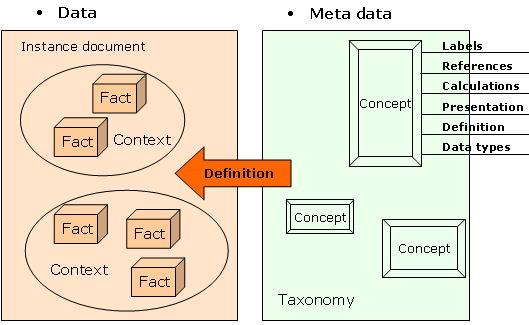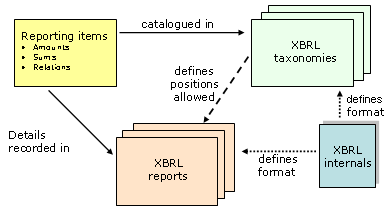Best Practices on Creating Instances based on CEBS Taxonomies
From XBRLWiki
(diff) ←Older revision | Current revision | Newer revision→ (diff)
Contents |
Abstract
This document describes the best practices on how to create instance documents based on extensions of CEBS (Committee of European Banking Supervisors) taxonomies. The document provides only a best practice view as orientation for supervisors adopting COREP and/or FINREP taxonomies of the CEBS, the national definition might differ and have special characteristics.
The Committee of European Banking Supervisors (CEBS) has published XBRL taxonomies for the common reporting framework COREP (COmmon REPorting) for the new solvency ratio for credit institutions and investment firms and for the standardised financial reporting framework (FINREP) for credit institutions operating in the EU. These taxonomies are available on the website of the CEBS http://www.c-ebs.org and on the project related websites http://www.corep.info and http://www.finrep.info. Comment
Status
This draft document is created by members of the XBRL network of the CEBS. Taxonomy editors that are extending the CEBS taxonomies (COREP and/or FINREP) are invited to add comments, experiences and suggestions for improvement on how to define the general rules for the creation of instance documents.
| KS: The following documentation is an abstract of the explanatory information on reports for the German COREP reporting. |
Basic principles of XBRL
Definition
XBRL
- stands for eXtensible Business Reporting Language.
- is a freely available electronic language used for financial reporting.
- provides a standard basis for the compilation, publication, evaluation and comparison of information supplied by and relating to enterprises.
- is an XML–based language
Area of application
XBRL was originally developed to enable a wide range of recipients such as banks, auditors, authorities and the stock exchange to process corporate information, eg balance sheets, in a standardised format. Nowadays, XBRL can also be used to create all kinds of company reports. Using software which supports the XBRL standard, the recipient can access the information content and see it displayed in the adapted format.
A standardised format shared by a large number of data recipients and data submitters represents the way forward in terms of processing data more quickly and more cost-effectively while simultaneously improving quality.
XBRL framework
XBRL defines a syntax in which information relevant to reporting is represented as the value of a concept within a defined context. Concepts are XML-based tags embedded in XBRL taxonomies. Standardisation in XBRL is achieved by grouping generally valid tags from XBRL associations into XBRL taxonomies. These can then be used and, if necessary, enhanced by authorities, financial institutions and other enterprises to define their data transfers.
The European COREP taxonomy used by the CEBS (Committee of European Banking Supervisors) represents the base taxonomy for solvency reporting. This is then adapted by the individual national central banks to meet their own reporting requirements. The COREP taxonomy is the implemented version of the COREP (Common Reporting) framework - that is to say of a uniform, European solvency reporting system for credit institutions and other financial service providers based on Basel II directives - in XBRL format.
Concepts are defined within the XBRL taxonomies, each of which gives information relevant to reporting. For example, concepts contain a name and a type. The type specifies the unit of measurement that is to be used for reporting purposes, eg a monetary or an integer value. Concepts are derived from the XBRL item element.
The relationship between individual concepts is defined by so-called XBRL linkbases. These also define any supplementary information such as references or descriptions (labels). In order to link these supplementary pieces of information with the XBRL taxonomies, XBRL uses technology called XML Linking (XLink). Using this technology it is possible to link XML files as well as to illustrate relationships between two or more elements.
Hence, taxonomies merely describe what is to be reported and do not actually contain any up-to-date figures concerning the report content as it is defined. These values are reported in the XBRL instance documents, eg capital requirements: 500,000. A concept that is represented in conjunction with its own specific value and contained within an instance is called a “fact”.
XBRL instance documents, which are also known as XBRL reports, may refer to one or more XBRL taxonomies. They also include a host of contextual information, such as the reporting period or the reporting party’s ID number, which is vital for interpreting the reported data. All units of measurement and currency are likewise defined in the instance documents.
An XBRL instance document taken in conjunction with its supporting taxonomies and their linkbases constitutes an XBRL business report.






